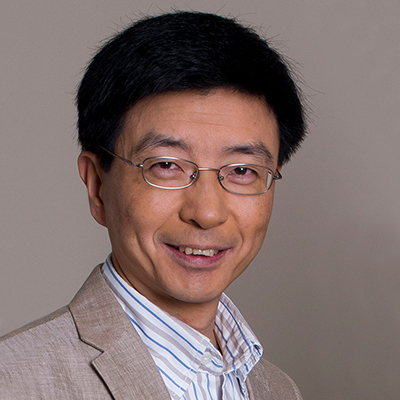“We give meaning to biomedical images”

Prof. Jiang, what scientific topic are you working on right now?
My team is developing methods of analysing biomedical images. Our projects are often linked to very specific biomedical questions. Working together with colleagues from the fields of biology and medicine we analyse for example how cells travel within the organism to close a wound or form lymphatic vessels. In this process we analyse what information is contained in biomedical images and then we actually make it possible to recognize and quantify it. Often, for example, it’s not possible to see where individual cells have their boundaries. We give meaning to the images and we prepare the data in order to be able to make statements on where exactly the cells come from or how resolutely they move, and at what speed.
Over and above image analysis, we also work with others on generating the images. This is a rare opportunity for computer scientists, and therefore all the more exciting. Together with our colleagues from biology we developed the so-called FIM table which enables us to track the movement of fruit-fly larvae. In another project, working with colleagues from medicine and mathematics, we constructed a set-up for the positron emission tomography which allows us to examine mice running around freely – without using the customary anaesthetic. During the examination we record their spatial movements and then factor them out of the image data.
What characterizes you personally as a scientist?
I studied at Peking University and received my doctorate and my habilitation in Berne. I spent six months at the Technical University of Berlin, and since 2002 I’ve been undertaking research at the University of Münster. There’s one thing that the universities in Beijing, Berne and Münster have in common: at all three, computer science is closely linked with mathematics. In Beijing I took mathematics as a secondary subject. In Berne computer science was closely linked to applied mathematics. In other words, the learning and research I have been engaged on has always had a strong orientation towards basics. I enjoy working on basics. What I like doing most of all is not to develop an application for one single device or system, but to work on a model that functions for a whole series of applications.
What is your greatest aim as a scientist?
I want to develop effective algorithms which, I hope, will not only be characterized by a certain elegance and methodological beauty, but which will also have broad application potential.
What’s your favourite “toy” for research – and what can it do?
For me, computers are only tools. What’s much more important are methods taken from areas of basic research such as mathematics. We need them to achieve machine vision with the aid of automatic image analysis.
Can you remember your happiest moment as a scientist?
It’s more true to say that there have been some moments of moderate happiness. One of them was the development of the FIM table. When it was clear that the principle worked and, after some iterations, we finally had a respectable prototype, that was a great feeling. As a computer scientist you don’t actually often have the opportunity to build something like that. It’s something that engineers tend more to do. Seeing our basic knowledge and a practical implementation come together was a lot of fun.
How much artistry, creativity and craftsmanship is there in your scientific work?
The projects I like most of all are always characterized by a high degree of creativity. Of course craftsmanship is also necessary – we have to have a command of mathematical methods, for example, and also be able to do programming. Only then are effective solutions possible. What is certainly a source of great pleasure is when images are created which are considered to be something akin to art – as we saw recently in our contribution for the CiM exhibition of images.

